For example, ultrabright LEDs need a 2.5-3.5 Volts to light: even two AA rechargeable batteries in series (1.2 + 1.2 = 2.4V) would not provide sufficient voltage to light up LEDs. Using a voltage boost circuit an LED can be powered by just one AA battery or any other power source - sometimes down 0.7 Volts!
This circuit can be used with low voltage solar panels to make a small battery charger or to power a 5 Volt device directly. It is also particularly good for getting useable voltages from small DIY stepper motor wind turbines - again to charge batteries or light LEDs.
The MintyBoost
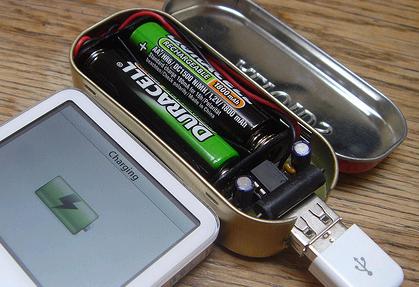
The origin of the booster circuit described in this article is the Original MintyBoost - a DIY device to power / recharge any USB device (e.g. an iPod) using just two rechargeable AA batteries. MintyBoost kits are available for sale ($19.50 in USA), however the circuit can be made with easy to find electronic components together with a MAX756 integrated circuit chip and put to alternative uses.
There is a useful forum where you can ask questions regarding the MintyBoost.
MAX756 3.3V/5V Step-Up DC-DC Converter
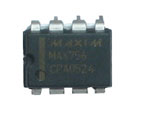
The full MAX756 Specification Sheet (PDF 120K) is available for download here.
. This tiny chip boosts input supply voltages as low as (user selectable) at up to
Making the DC-DC Converter
The following parts are necessary to make this 0.7 to 5 Volt DC boost converter together with leads and either prototyping breadboard or soldering equipment and a board:1 x MAX756
2 x 100uF Capacitors
2 x 0.1uF Capactitors
1 x 1N5817 Schottky Diode
1 x 22uH Power Inductor
The MAX756 is available direct from MAXIM with prices ranging from $3.02 (ordering 1-24) down to $1.95 (ordering 1000+). We can supply the rest of the components through the REUK Shop if required - email us to request a quote listing the components and quantities you require.
Circuit Diagram
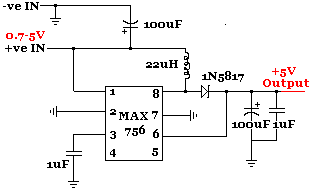
Pictured below is the (not very photogenic) finshed prototype circuit.
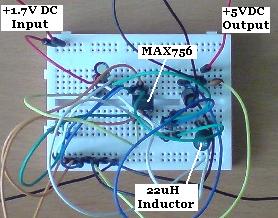
The above circuit was tested using two 'flat' AA rechargeable batteries. The total voltage of the batteries was measured at 2.21 Volts, and the output voltage from the circuit was measured at exactly 5.00 Volts with a digital multimeter. The output voltage was used to power an ultrabright LED for 24 hours (through a 270 Ohm current limiting resistor) without any sign of dimming during that time.
3.3V Output from MAXC756
The circuit above is used to boost DC voltages from 0.7+ Volts up to 5.0 Volts. By changing the input to pin 2 of the MAX756 from ground to positive, the output is switched to 3.3 Volts. This enables some LEDs to be lit without needing a series resistor or with a smaller resistor, so there is less power wasted as heat.The 3.3 Volt DC output can also be used to slowly charge a couple of AA batteries (in series) with the sub-200mA current output from the MAX756.
Alternative Circuit
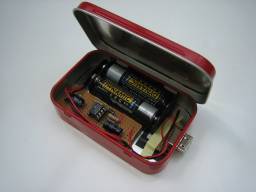
Details of an alternative, but similar, USB Battery Pack circuit are available by clicking here. As with the MintyBoost, it is designed to power USB devices with the output from a couple of AA batteries however the circuit can be put to many other uses.
Instead of the MAX756, an LT1073 (specification sheet (1.4MB) here) integrated circuit is used. This chip is designed to be used in single-cell to 5V converters.
http://www.reuk.co.uk/DC-Voltage-Multiplier-Circuit-Plans.htm